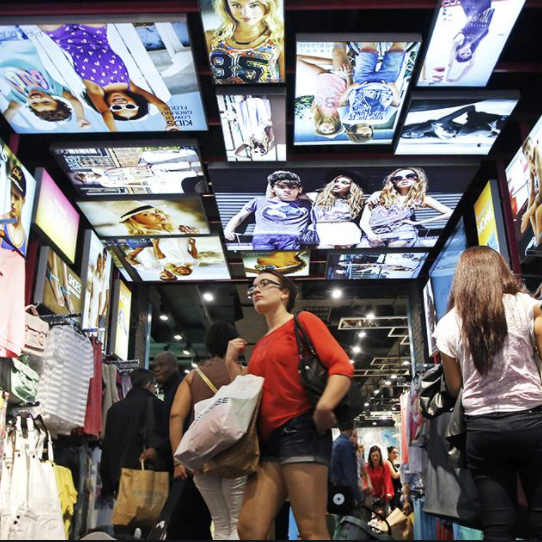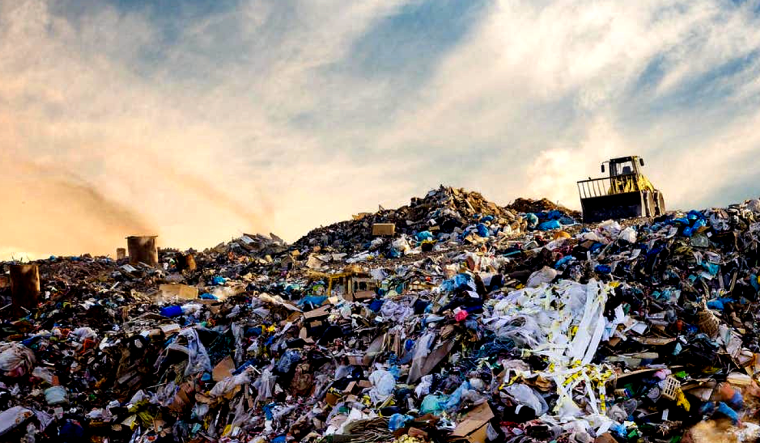Californian Mayor, Standford student warn about fast fashion buying for holidays
NY ASSEMBLYMAN ORTIZ HAS A BILL THAT WOULD LABEL GARMENTS MADE WITH FABRICS THAT SHED MICROPLASTICS

December 17,2020
By Ramona du Houx

Consumers buy 43 percent more clothing items this time of year. This holiday season, Elected Officials to Protect America (EOPA) a group on non-partisan lawmakers from around the country, is encouraging the public to source the clothing they purchase, highlighting the environmental dangers and the unfair labor practices supported by fast fashion. EOPA hopes to discourage the purchase of fast fashion manufactured, all too often, in sweatshops, made of fabrics that shed microplastics when washed, polluting our land and waterways.
The term fast fashion was first created in the 1990s in response to the opening of the store Zara in New York City. Whereas most stores up to that point had had four seasons of new clothing shipments, corresponding to the four seasons of weather, Zara is described as having “52 micro-seasons,” meaning the store receives shipments of new styles every single week. Many other stores are considered fast fashion as well, such as H&M, Forever 21, Gap, American Apparel, TopShop, and Uniqlo.
The average U.S. household spends around 3.8 percent of their income on clothing. Families bringing home the average $64,175 annually spend around $2,440 on clothing per year. At Christmas, the average family will increase spending on clothes by 43 percent. This means that demand for fast fashion increases.Fast fashion providers churn out even more products at even lower prices to boost profits for Black Friday, Cyber Monday, Christmas, and New Year sales.
“The fast fashion industry is rife with unjust labor practices around the world. Additionally, the clothing produced is made with oil-based polyesters and synthetics that shed microplastics when washed, polluting our lands and waterways. In order to sell garments for low prices, workers, some of them children, are poorly paid and are forced to work long hours. In 1995, one of my first priorities as a newly elected Assembly Member was to expose the human rights violations taking place in New York’s sweatshops. I was appointed Chair of the newly created Subcommittee on Sweatshops and was able to recover wages for unpaid workers and even shut down a sweatshop,” said Félix W. Ortiz, New York Assemblymember/Assistant Speaker, U.S. Army veteran. “Unfortunately, corrupt labor practices continue to exist today within the fashion industry. As Co-Chair of the Leadership Council of Elected Officials to Protect America (EOPA) I’m proud to raise public awareness about this issue. People need to be knowledgeable about the environmental and human costs associated with purchasing fast fashion, so they can make better choices.”
The International Labor Organization estimates that worldwide 170 million children are engaged in abusive child labor, many of whom are a part of the garment industry. Industry officials in countries providing labor, such as India, Bangladesh, Pakistan, China, and Thailand, face tight deadlines from their employers in the U.S. and Europe. To fill these orders on time, they frequently sub-contract work to several other factories, making the supply chain complex and difficult to keep under surveillance. For this reason, some employers claim they are unaware of bad labor practices, since the fabric is not coming from the factory under surveillance.

According to recent reports, the fashion industry is accountable for ten percent of carbon emissions globally. But it wasn’t always this way. In recent years, fast fashion stores have taken over malls, and in many ways, the world.
“During this pandemic we have an opportunity to support local thrift shops and protect our planet. It’s no secret that traditional and fast fashion retailers perpetuate unsustainable manufacturing practices. Whether they know sweatshops are involved in the manufacturing process or that new clothing is often made from polyester, which sheds microplastics into our water when washed, can be debated. What we do know is that buying secondhand guarantees a thoughtful, one-of-a-kind gift,” said San Luis Obispo, Mayor Heidi Harmon, EOPA-California Leadership Council Member. “A second-hand purchase also means a zero-impact cost for the earth. So, this year, think about skipping the trendy new holiday sweater in favor of helping Mother Earth. If you can’t find what you’re looking for in a secondhand shop please support local businesses. Our community businesses have had a stressful year with COVID, a local purchase means more now than ever before.”
Mayor Harmon lives by her convictions, buying at thrift stores, recycling and bikes or uses public transportation. San Luis Obispo was one of the first cities to declare a Climate Emergency. She recently received the Conference of Mayors Climate Award for her sterling work on climate change.

The rise of fast fashion has been paired with the rise of so called influencers on social media. Trendy celebrities, such as the Kardashian family, post photos of themselves dressed in expensive clothes, reaching millions of followers. Then demand for these garments skyrocket, and within days fast fashion stores will be selling inexpensive knock-offs.
In order for these stores to have 52 micro-seasons, production of garments must occur incredibly quickly and cheaply, which results in several negative consequences for the environment. To begin with, the production of clothing takes an enormous amount of water. According to the World Wildlife Fund (WWF), it takes around 5,200 gallons of water to produce 2.2 pounds of cotton, which is enough for one t-shirt and one pair of jeans. This industrial process produces an enormous amount of wastewater, from cotton field runoff and the dying process awash in toxic chemicals. This toxic wastewater is dumped in waterways that feed agriculture land and reservoirs of drinking water, where it poses a risk to surrounding communities. Last September, CNN released a report that detailed how textile production devastated a Bangladesh community. Bangladeshi interviewees commented on the ink “black rivers” full of pollutants. They said that “there are no fish now” and “the kids get sick if they stay here.”

In addition to negatively affecting water quality and quantity, fast fashion is frequently made from cheap fabrics. Sixty percent of textiles are made from polyester, manufactured from fossil fuels. Recent studies show that thousands of microplastic threads come off of our clothes in washing machines, which have no filters to prevent the tiny microplastics from escaping.
Félix W. Ortiz, New York Assemblymember/Assistant Speaker, U.S. Army veteran has a Plastic Microfiber Bill, A.1549, in the New York State Legislature. Once passed, the legislation would require additional labels on clothing composed of more than fifty percent synthetic material alerting consumers that their purchase may impact the environment. While the proposed legislation is a great start, action is needed on a national level as well.

A study covered by the Guardian found that in 2019, 13.3 quadrillion fibers were released into California’s environment. It is estimated that humans ingest over 5,800 particles of synthetic debris each year. Microplastics are in our water, food, air and oceans.
“Trends are quick to come and go, and the social pressure to stay relevant is intense, amplified by social media,” said Miriam Wallstrom. “Fast fashion stores churn out dozens of new styles each week, in line with the new trends. Even though they sell the clothing at low prices, they’re able to make a profit because they know young people will purchase so much. In addition to legislation, a good way to help the issue is by promoting awareness; if more people know about the environmental degradation and human rights abuses involved in fast fashion, I believe a cultural shift away from these stores can happen. In fact, I believe this cultural shift is already beginning.”
Miriam Wallstrom is a junior at Stanford University studying political science and human rights. She is passionate about environmental justice and has recently been involved in the Sunrise Movement and a fossil fuel divestment initiative at college.

The average person in North America purchased the equivalent of 60 T-shirts per year in 2014. Items of clothing are worn half as many times as compared to 15 years ago before being thrown away. This means about 85 percent of textiles are being thrown away each year. Mounds of polyester based clothing sits in the environment and sheds microplastic into the ocean. According to one study, clothing is the biggest source of microplastics in the ocean.
According to a United Nations Economic Commission for Europe 2018 report, there will be 5.4 billion people in the global middle class by 2030, up from 3 billion in 2015, which greatly increases the demand for fast fashion. If clothing continues to fly from the factories to the shelves, and then to landfills at the same rate as it is now, the results would be catastrophic for the environment and labor rights.
In developing countries, over 168 million children ages 5 to 14 are forced to work in sweatshops in the textile industry. America has stronger labor laws than most undeveloped countries, but many labor violations slip under the radar of the US Department of Labor.
“The minimum wage needs to be increased and immigration policies need to be reformed, nationally. Most sweatshops are staffed by undocumented workers, trying to make a better life for themselves and their families. They should not be persecuted by our government. We should be creating pathways, not hurdles, to citizenship,” said Félix W. Ortiz, New York Assemblymember/Assistant Speaker, U.S. Army veteran and EOPA National Leadership Council Co-Chair. “There are solutions to this man made problem, as there are solutions to our man made climate crisis. In order for these issues to be prioritized by lawmakers, public awareness needs to increase.”
Cultural shifts reflect that awareness. Thrift stores, which resell already used clothes, are growing in popularity especially among Generation Z. According to the Berkeley Economic Review, Gen Z is more likely to be conscious and concerned about the environmental and ethical impacts of their purchases. Consumers are demanding more from their shops and some, such as H&M, say they are working to increase transparency on their labor practices.
In Congress, stricter sanctions of sweatshop imports can and should be implemented.
In 2019, Sweden passed a law issuing a chemical tax on clothing, which works to protect both producers and consumers.
Get Involved
If you'd like to help with maintaining or developing the website, contact us.
Publish
Publish your stories and upcoming events on Indybay.


